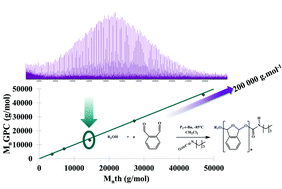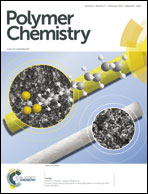Control over molar mass, dispersity, end-groups and kinetics in cyclopolymerization of ortho-phthalaldehyde: adapted choice of a phosphazene organocatalyst†
Abstract
The use of different phosphazene bases as catalysts has been investigated in the polymerization of ortho-phthalaldehyde (PA) in the presence of an alcohol used as the initiator. Among the catalysts considered (P1-t-Bu, P2-t-Bu and P4-t-Bu) only the less active one (P1-t-Bu) allows a very good control of the PA polymerization in terms of mass parameters (Mn, Mw and molar mass dispersity) and end-group fidelity. To confirm the structure and the mass range of the newly synthesized PPA, mass spectrometry and gel permeation chromatography have been selected as main characterization techniques. By comparison with the state-of-the-art, the kinetics of polymerization has also been significantly improved by reducing the polymerization time from several hours to a few minutes. The judicious choice of catalyst also allowed expanding the macromolecular engineering by preparing in a one-step procedure a defined and controlled polyphthalaldehyde-block-polyethylene oxide amphiphilic diblock copolymer.


 Please wait while we load your content...
Please wait while we load your content...